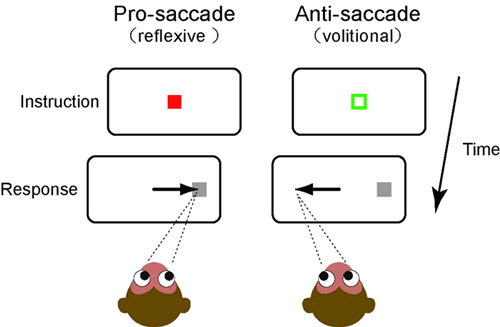The thalamus in the brain has proven to be involvedin volitional eye movements
Patients with a variety of psychiatric and neurological disorders, such as schizophrenia, attention deficit hyperactivity disorder (ADHD) and Parkinson’s disease are often unable to suppress impulsive behavior. For example, those patients have a difficulty in suppressing eye movements toward a target, even when they are asked to look away from the target (anti-saccades).
A team led by Associate Prof. Masaki Tanaka in the Graduate School of Medicine examined single neuronal activities in monkeys performing anti-saccades, and found that signals sent from the thalamus―the middle part of the brain―to the cerebral cortex play a role. It is well known that various diseases, including those mentioned above, accompany dysfunctions of voluntary eye movements, but underlying neural mechanisms have not been elucidated. The findings provide a promising clue for understanding the pathological physiology in those diseases, and may suggest a possible application of eye movement testing in diagnosis and evaluation of the efficacy of clinical treatments such as deep-brain stimulation and medications.
The results of this study were reported in The Journal of Neuroscience on April 7, 2010.
http://www.jneurosci.org/

The research team examined the brain activity
in monkeys using a simple eye movement called “anti-saccade”.
Contact information:
Associate Prof. Masaki Tanaka
Graduate School of Medicine, Hokkaido University
E-mail: masaki@med.hokudai.ac.jp
